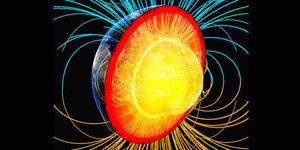New diagnostic technology uses levitating proteins
Intrinsic biophysical properties of proteins hold valuable clues about how they function and their role in disease. Take, for example, one of the most commonly-used biological samples used to provide diagnostic answers: blood. A plethora of different proteins exist in blood plasma, from carrier proteins that transport hormones and vitamins, to globulins which serve as key components of the immune system.
Examining the 3-dimensional structures and physical properties of these blood proteins at high resolution would reveal a wealth of information, enabling the creation of specific proteomic profiles for different diseases. Unfortunately, however, this has remained outside the realm of possibility for researchers and clinicians due to the lack of appropriate analytical tools.
Morteza Mahmoudi, a professor at the Department of Radiology Nanoscience and Nano Biomedical Engineering at Michigan State University, has developed a new nanotechnology platform that can unveil previously hidden protein features with unprecedented resolution.
Here, magnetic nanoparticles are added to plasma samples, which naturally associate and bind to each other. This cocktail is then placed within a magnetic field, where the magnetic force causes proteins to “levitate”, separating them into bands based on their relative densities.
These bands form distinctive patterns that could provide vital indications on the health status of an individual.
According to Mahmoudi, the next step in their research is to validate their platform for defining signature levitating protein profiles for cancer and multiple sclerosis (MS). At present, positively diagnosing MS involves using subjective measures, including monitoring the patient’s symptoms, behavior or response to initial treatments.
“There is no biomarker or MRI test to diagnose the different subtypes at the early stages. Correctly diagnosing the type of MS is critical, since it dictates which type of treatment is appropriate. We hope this MagLev method will give clinicians a technique to define the subtypes,” said Mahmoudi.
In addition, magnetic nanoparticles can also be used in other applications, including cancer therapies, genetic engineering and diagnosing bacterial infections.
Sources: Medgadget, Analytical Chemistry.









